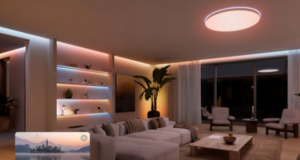
Air conditioners are refrigerative coolers. While these aren’t the most efficient coolers available, they are incredibly effective and provide excellent cooling in any climate.

Refrigerative coolers are the most common type of air conditioner in Australia. They provide instant cool air, and work well in both dry and humid climates. While refrigerative air conditioners are substantially more expensive to install and run than evaporative air conditioners, they are generally considered to provide a more ‘comfortable’ sort of cool, due mostly to the fact that they draw the humidity out of the air.
Refrigerative air conditioners come in a range of different varieties and types, including window or wall mounted units, split system units, cassette units and large, roof mounted ducted units. While wall mounted units were popular in the past, these days people tend to opt for split system units.
How refrigerative air conditioners work
Refrigerative air conditioners are effectively heat pumps, and use what’s known as the ‘refrigeration cycle’ to cool air. As the name so helpfully suggests, this is the same technology that is used in refrigerators.
Most refrigerative air conditioners consist of three main components: a compressor, a condenser, and an evaporator. In split system units, the compressor and condenser are normally located in the ‘outdoor unit’ (the part that sits outside), while the evaporator is housed inside the wall unit. In reverse cycle air conditioners, the condenser, which is responsible for expelling heat, is also located in the inside unit. The process through which cool air is produced consists of:
1. Gas (usually Freon) is compressed by the compressor, which makes it hot.
2. This gas then runs into the condenser, which dissipates the heat and condenses the gas into a liquid.
3. This cool liquid then goes into the evaporator through what’s called an expansion valve where its pressure drops as it evaporates back into a gas. Because of the drop in pressure, the fluid extracts heat from the coils it is passing through.
4. The gas then returns to the compressor to start the cycle again.
- Reverse cycle air conditioners can also act as heaters as a result of their ability to run this process in reverse. When run in reverse, this cycle is known as the ‘heating cycle’.
Where are they best installed?
In order to produce the best results, refrigerative air conditioner units need to have access to a good amount of airflow. How much depends on what type of unit you choose – split system, ducted or wall-mounted. For this reason, refrigerative air conditioners (or specific parts of them) need to be located outside.
It’s important to know that the compressor component (normally located in the ‘outdoor unit’ of a split system air conditioner) can produce a fair bit of noise. When it comes time to choose where to mount your air conditioner, you should consider how close this bit is to your windows – or those of your neighbours. The noise may keep you awake at night, and if it’s close enough to the neighbours’ windows, it may even violate noise pollution laws. To avoid any hassles, you can check the rated operating volume of the air conditioner (ask the sales person) and check with your local council to see what the rules and limits are in your area.
Licensed installers
If you’re planning on installing or repairing a refrigerative air conditioner, it’s important that you do so using a licensed technician. Because refrigerative air conditioners contain gases that are extremely harmful to the environment, it is illegal for anyone not holding a current license from the Australian Refrigeration Council to handle them.
How to get the most from a refrigerative air conditioner
Refrigerative air conditioners need to operate in a confined (or confineable) area. When you run a refrigerative air conditioner, you should close all of the doors and windows to produce the best results. This will improve the efficiency of the air conditioner, and reduce the amount of power it uses. Decent thermal curtains and window glazing or film with a low heat conductivity will also make a significant difference to how effective your air conditioner is.
|
Advantages
|
Disadvantages
|





